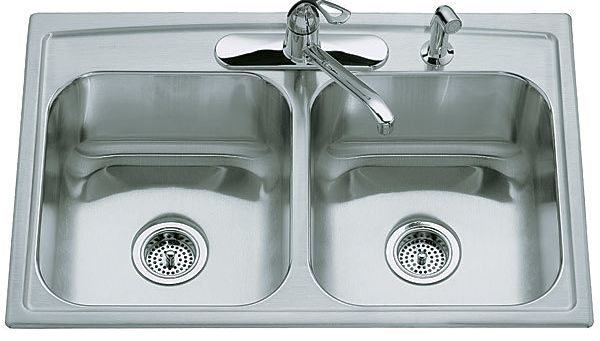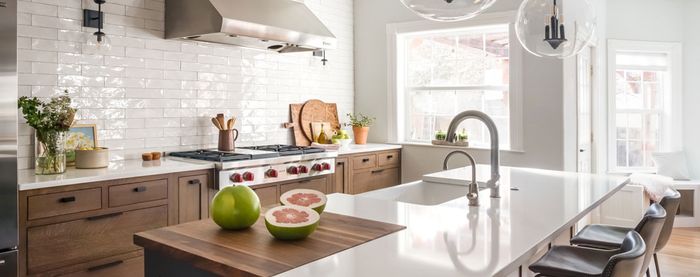Choose the Right Kitchen Sink
Follow these three steps to take your sink from a dingy dumping ground to a functional focal point

Buying a kitchen sink means having to make decisions in three areas: layout, material, and installation. The choice of layout depends on multiple factors: bowl shape and orientation, accessories, number of bowls, and bowl depth. The choice of material begins with a wide selection, and many materials are available in a variety of styles.
The most common material, stainless steel, cleans easily, resists staining, and withstands a wide range of temperatures. Composite sinks are typically made with quartz or granite and a bonding agent. Durable and resistant to heat, they are an economical alternative to natural-stone sinks. Fireclay sinks are covered with a hard glaze that makes them resistant to abuse and contamination. Sinks made from cast iron or steel and coated with enamel come in a wide variety of colors and can withstand high temperatures, but their coating can chip or crack, leaving them vulnerable to rusting.
Glass sinks represent a niche; they offer a unique look to a kitchen, but they can be severely damaged by hard impacts. Acrylic sinks are inexpensive and come in a wide variety of colors. They are more vulnerable to scratches, however, and can be damaged by temperatures over 300 degrees. Natural-stone sinks are very durable and can withstand high temperatures, but their porosity means that they must be sealed before use. Sinks are also available in exotic metals such as copper, brass, and nickel, some of which can be very expensive.
The choice of installation is typically much simpler: drop-in (easy installation, difficult to clean around) or undermount (difficult installation, easy to clean around).

